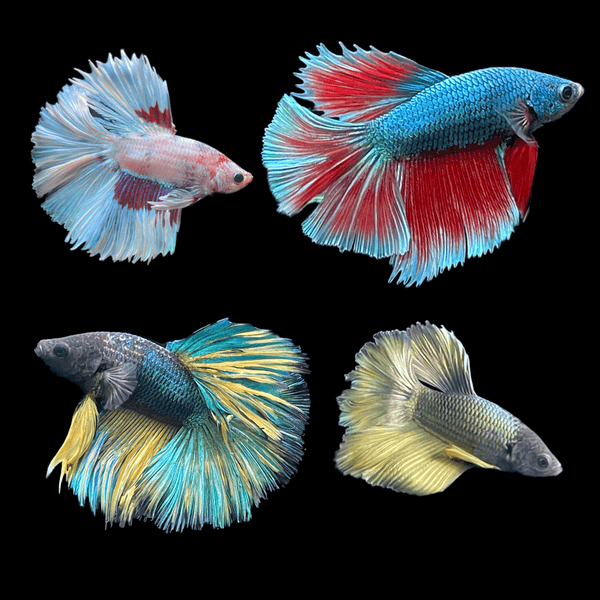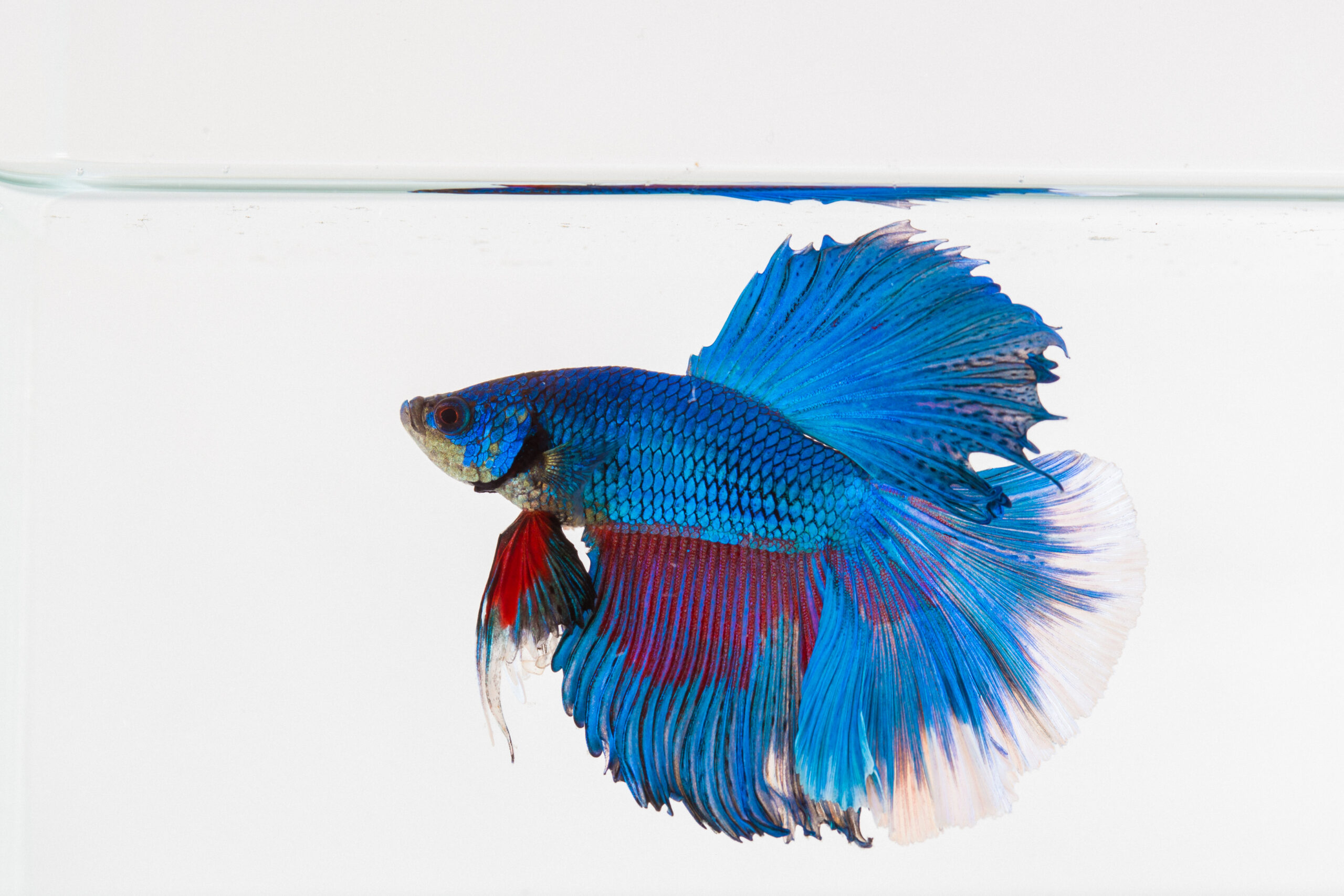Reproducing Betta Fish: a Comprehensive Step-By-Step Guide to Efficiently Raising Infant Bettas From Eggs to The Adult Years
Breeding Betta fish is a thorough venture that calls for careful preparation and execution to make sure the successful advancement of fry from eggs to mature fish. Selecting genetically varied breeding couple with desirable features is only the start; creating an optimal atmosphere and recognizing the details of the breeding process are just as essential. As the male Betta faithfully constructs a bubble nest and guards the precious eggs, the subsequent phases of treatment and change demand attention to detail and expertise of ideal practices. Exactly how does one browse the tough yet fulfilling path of nurturing these dynamic animals to their adult years?

Picking Reproduction Pairs
When starting the journey of reproducing Betta fish, choosing the best breeding sets is important to achieving preferable qualities and a healthy family tree - betta fish. The primary step in this process is to identify the certain attributes you want to boost or protect, such as color, fin kind, and physique. It is necessary to pick genetically varied pairs to stay clear of inbreeding, which can cause health and wellness problems and unwanted attributes
Assess prospective breeding prospects carefully. A healthy male Betta needs to display vibrant shades, an active attitude, and well-formed fins, while the female must also show vivid coloration and a rounded stubborn belly, indicating preparedness for spawning. Observing the personality of both fish is important, as hostile or overly timid people may not breed efficiently.
Keeping records of the moms and dad fish's origins can aid you track hereditary traits and potential issues. Eventually, investing time in the choice process will substantially boost the chance of generating solid, vivid children that satisfy your breeding goals.

Preparing the Breeding Tank
Developing an ideal breeding setting is a crucial step after picking appropriate pairs for Betta fish. The reproduction storage tank ought to be specifically created to offer comfort and promote the natural reproduction habits of the fish. Start with a container size of a minimum of 10 gallons to make certain adequate area for both the man and female Bettas.
Preserve a gentle filtering system to keep the water clean while avoiding strong currents that can emphasize the fish. Furthermore, an air rock can be added to give oxygenation without interrupting the water surface area way too much.
Temperature guideline is important; go for a steady series of 78-82 ° F(25-28 ° C) using a reliable heating unit. The pH degree ought to be preserved in between 6.5 and 7.5, and regular water adjustments are necessary to make sure high water top quality.
Incorporate drifting plants or generating mops to produce concealing spots for the woman, while additionally motivating bubble nest building by the man - betta fish. Finally, make certain the container is without sharp decorations and any type of prospective hazards, as the well-being of the fish ought to always be prioritized throughout this crucial stage of breeding.
The Reproduction Refine
Commonly, the breeding procedure for Betta fish entails a series of unique and visible habits that suggest preparedness for reproduction. The male Betta begins by building a bubble nest at the water's surface, which acts as a website for the fertilized eggs. This nest is essential, as it gives a secure setting for the eggs until they hatch out.
When the nest is developed, the male will certainly present courtship behaviors, such as flaring his fins and displaying vivid colors to draw in the woman. The woman, upon noticing the man's preparedness, will react by presenting upright red stripes along her body, signaling her receptiveness.
The fed eggs then fall to the bubble nest, where the male thoroughly accumulates and returns them to the nest. Following this, the male presumes duty for securing the nest and ensuring the security of the eggs until they hatch out, typically within 24-36 hours.
Caring for Betta Fry
Caring for Betta fry needs mindful attention to their environment and nutrition to make sure healthy and balanced development and advancement. After hatching, Betta fry are incredibly little and at risk, demanding a stable and tidy environment. my company Keeping a water temperature in between 78 ° F and 80 ° F is essential, as Betta fry thrive in warm conditions. In addition, guarantee that the water is without unsafe toxins; normal water modifications of 10-20% are suggested to keep optimum water high quality.
Feeding Betta fry is just as crucial. They ought to be provided infusoria or finely crushed high-grade fry food, as their mouths are too little to handle larger particles. As they grow, you can progressively introduce bigger foods, such as baby salt water shrimp or powdered flakes, to ensure site web they receive appropriate nourishment. Feed them little quantities several times a day, being cautious not to overfeed, which can cause water high quality problems.
Transitioning to Grownup Bettas
As Betta fry mature, transitioning them to grown-up Bettas is a critical phase that calls for cautious administration of their setting and social communications. This process typically begins when the fry get to around six weeks old, at which point they can be progressively introduced to a much more structured living environment.
To facilitate this change, it is necessary to make certain that the water criteria-- such as temperature, pH, and ammonia levels-- are ideal and secure. Grown-up Betta fish grow in cozy water (around 78-80 ° F) with a pH of 6.5 to 7.5. Slowly accustom the fry to these problems to reduce stress and anxiety.
Social communications are one more essential aspect; man Bettas are notoriously territorial and hostile. It is recommended to different men into individual containers as they develop. Women Bettas can be housed with each other, yet care ought to be taken to keep track of for indicators of aggressiveness.
In addition, nutritional changes ought to be made as the fry expand. Integrate top notch pellets and live foods to sustain their development and original site health. By taking care of these factors properly, you can promote an effective change to their adult years for your Betta fish.

Verdict
Successful reproduction of Betta fish calls for mindful interest to information throughout the whole procedure, from selecting genetically varied pairs to providing optimum take care of fry. By guaranteeing appropriate reproduction problems and preserving water high quality, the chance of healthy offspring increases significantly. Additionally, a balanced diet plan and steady adjustment to adult environments are essential for the growth and growth of Betta fish. Complying with these actions diligently cultivates a growing population of Betta fish, enhancing both their wellness and vitality.